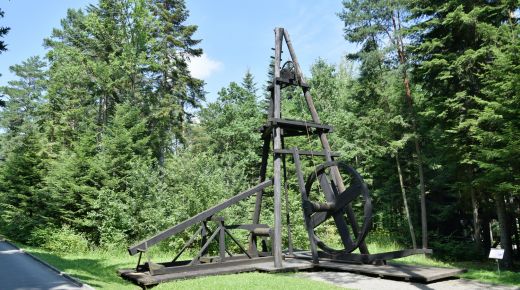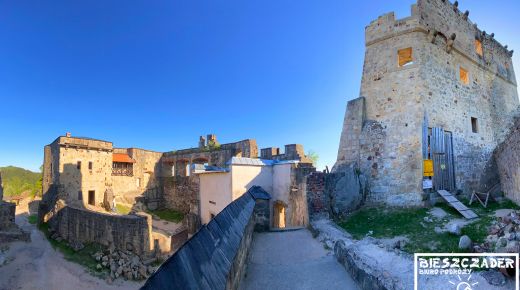The centre of the town features a perfectly preserved old urban layout and a town hall built in the early 1600s, reconstructed in the second half of the 1800s. It is a building with rectangular floor layout with cross-barrel vaults in the cellars and on the first floor. In its western facade we can see heraldic symbols of the former town owners: Trąby coat of arms of the Jordan family, which is also Dukla’s emblem, and Poraj coat of arms of the Miciński family
One of the landmarks here is the late Baroque palace of the Mniszech family from the 18th century, currently Historical Museum. The palace complex includes a French-style park established around 1765; here you can see a lime tree alley, many exotic trees, a water system altered in the 19th century as well as numerous garden structures. In the museum one can learn about the history of Dukla and the palace itself and see the collection of heavy weapons. The highlights here are the exhibits of weapons and military equipment that were used during battles in the Carpathians during World Wars I and II.
The town and its surroundings are associated with the life and work of St. John of Dukla; a figure of the saint can be seen near the Bernardine church and monastery.
READ MORE ABOUT HISTORICAL TOURISM AND MILITARY IN THE LOW BESKID
Worth seeing:
-
park
-
park chapel from 1875.
-
figure of St. John of Dukla
-
St. Mary Magdalene’s church from the 18th century
-
Bernardine church and monastery complex (the 18th century church dedicated to St. John of Dukla holds relics of this saint, brought here from Lviv
-
town hall from the early 17th century, reconstructed in the 19th century
-
18th and 19th century tenement houses located around the market square
-
ruins of the synagogue built after 1758 (it burned down in 1940)
-
remains of an old customs chamber building from the 18th century
-
old and new Jewish cemetery (over 200 tombstones)
-
military cemetery
Photo: Krystian Kłysewicz



